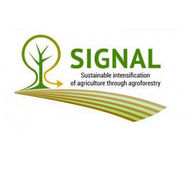13 years of biomass production from three poplar clones in a temperate short-rotation alley cropping agroforestry system (2023.0)
Langhof M., Schmiedgen A.
Biomass and Bioenergy, 175 (), 106853
doi:10.1016/j.biombioe.2023.106853
Abstract
Farmers' interest in establishing agroforestry systems is increasing, as they are considered to have many benefits, such as the possibility of climate adaptation and crop diversification. Growing wood on agricultural land can produce biomass for energy or material purpose. Knowledge of the yield potential of the woody component in an agroforestry system is essential for informed decision making by farmers. The present study investigates the biomass production of the three poplar clones 'Max 1′, 'Koreana' and 'Hybride 275′ during the first 13 years (2008–2021) of their growth in a short rotation alley-cropping agroforestry system in Lower Saxony, Germany, on a vertic cambisol as well as a stagnosol soil. There was a high clonal effect on re-sprouting and mortality of the trees as well as on the mean annual dry matter (DM) woody biomass increment (MAI). Overall, 'Max 1′ showed highest re-sprouting, lowest mortality and highest MAI compared to the clones 'Hybride 275′ and 'Koreana'. The MAI of the three poplar clones was not affected by the rotation length of 3 or 6 years. Over the period of 13 years MAI of 'Max 1′ was 13.3 t Mg ha−1 year−1 DM, whereas that of 'Hybride 275′ and 'Koreana' was 10.2 and 9.8 t Mg ha−1 year−1 DM, respectively. The MAI was significantly determined by the factor harvest year. A low MAI was found for the 3-year rotation cycle in 2021, which was most possibly caused by drier and warmer than average vegetation periods in 2018–2020. Under the given site conditions, clone 'Max 1′ proved to be the most productive.
